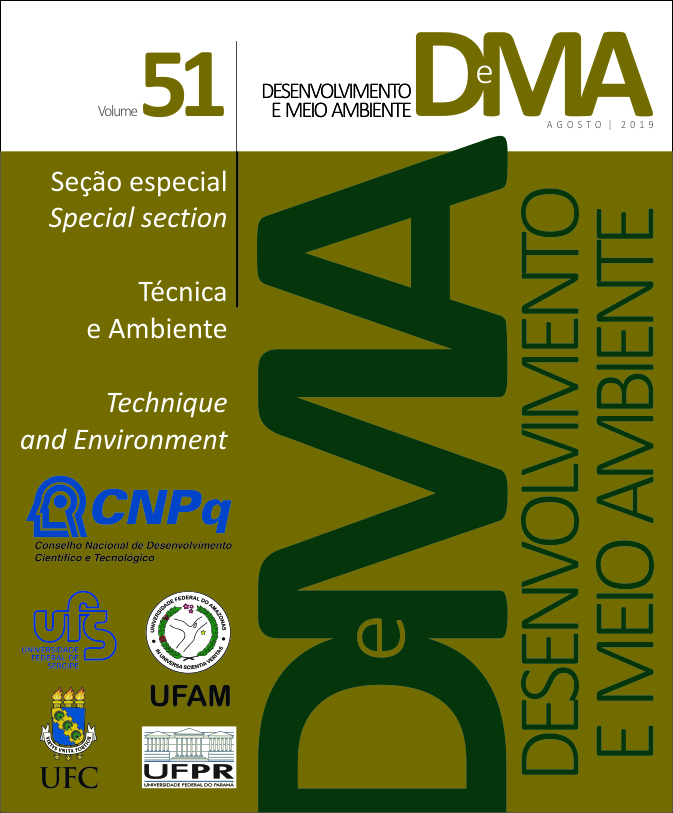Ecoethos da Amazônia: interação e ludicidade juvenil mediada por um jogo de simulação
DOI:
https://doi.org/10.5380/dma.v51i0.55185Palavras-chave:
Amazon, simulation game, environmental education, youth and environmentResumo
Ecoethos da Amazônia is a simulation game that explores the symbology of the five elements (Earth, Water, Air, Fire, and Care) by the use of tridimensional models. The set consisted of a circular space with four stations, each representing one of the four natural elements. The players must solvethe challengespresented to them in each station. The Water pollution station deals with waste and water supply; the Air station brings questions about greenhouse gas emission, carbon sequestration, and land use; the Earth station presents questions focused on biodiversity, relief, and water resources; the Fire station alternative energy options are explored, always considering the biodiversity, the physical-geographical, the social and the economic characterization of the environment. The aim of this study was to evaluate players’ experience and understanding of the concepts explored during the activity. The theoretical approach was based on the Gamer User Experience Evaluation and the Bloom Taxonomy. Participated in this study 168 students (6º to9º grades) of public schools. Some pre-established categories were considered for the analysis: opinion about the experience, game layout, difficulties handling parts, feelings triggered, understanding the representation of the parts, playfulness, and potential in changing behavior. Ecoethos da Amazônia was considered a game that teaches, entertains and enables responsible interaction. The game engages the participant’s attention and the situations presented were challenging buteasy to understand. The results showed that the game experience can promote environmental responsibility while pointing out the potential of the game to raise awareness, inform and reflect on social and environmental issues.
Downloads
Publicado
Como Citar
Edição
Seção
Licença
Os Direitos Autorais sobre trabalhos publicados nesta revista são do autor, com direitos de primeira publicação para a revista. O conteúdo dos trabalhos publicados é de inteira responsabilidade dos autores. A DMA é um periódico de acesso aberto (open access), e adota a licença Creative Commons Atribuição 4.0 Não Adaptada (CC-BY), desde janeiro de 2023. Portanto, ao serem publicados por esta Revista, os artigos são de livre uso para compartilhar (copiar e redistribuir o material em qualquer suporte ou formato para qualquer fim, mesmo que comercial) e adaptar (remixar, transformar, e criar a partir do material para qualquer fim, mesmo que comercial). É preciso dar o crédito apropriado, prover um link para a licença e indicar se mudanças foram feitas.
Os conteúdos publicados pela DMA do v. 53 de 2020 ao v. 60 de 2022 são protegidos pela licença Creative Commons Atribuição – Não Comercial – Sem Derivações 4.0 Internacional.
A DMA é uma revista de acesso aberto desde a sua criação, entretanto, do v.1 de 2000 ao v. 52 de 2019, o periódico não adotava uma licença Creative Commons e, portanto, o tipo de licença não é indicado na página inicial dos artigos.




